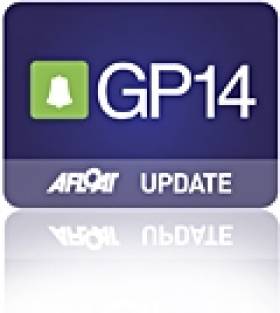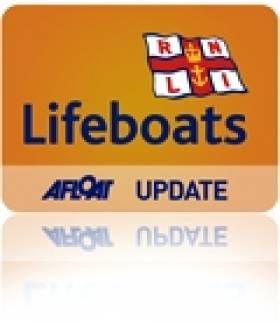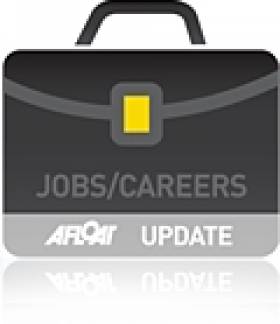Displaying items by tag: Dinghy
West Cork Awakes With Mid–Term Dinghy Sailing
West Cork is fully afloat this week with junior sailors from all over Ireland including some from Wales writes Claire Bateman.
With the schools on mid term break it was once again time for the annual trek west for the sailors and their families. We watched the trail of vehicles heading westward, as usual packed to the roof, some trailing boats and some with them on roofs. The vehicles always seem to be packed with numerous excited children accompanying their parents not to mention the wide variety of breeds and numbers of mutts accompanying their families.
In Schull, some thirty Lasers were attending a training session, with thirteen 420s and seventeen Toppers all adding up to make a colourful scene.
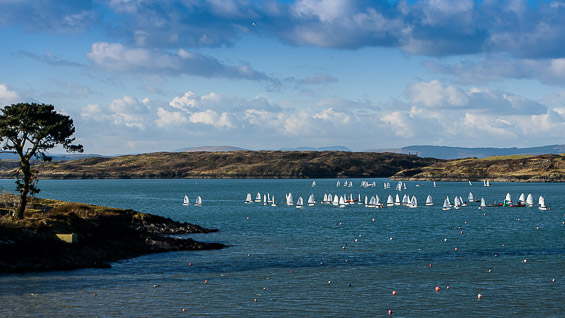

In nearby Baltimore, some one hundred and forty Optimists including the Senior, Junior and Regatta fleets from nineteen clubs all over Ireland and some from Wales, were being processed and given their various coloured ribbons to indicate their fleets and Coaches before splitting into briefing groups . The more experienced were putting to sea following their briefing. Meanwhile, the Regatta Fleet were being entertained ashore and finally the more energetic parents were taking the aforementioned mutts for brisk walks to the famous Beacon with the more exhausted parents seeking some comforting food in the well renowned local hostelry.
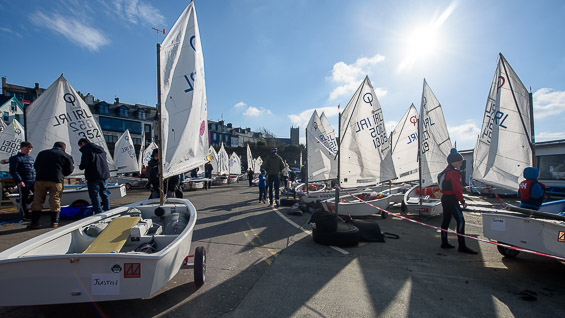
Surely Spring is now well sprung and we can hopefully look forward to a good Junior season for 2016.


Classes Hear ISA Plans to Support Irish Dinghy Scene
An Irish sailing classes forum held at the weekend gave an opportunity to hear Irish Sailing Association progress at revitailing Irish dinghy sailing. Open to all clubs and classes the forum was hosted by appointed ISA Director responsible for dinghies and Classes, Sarah Byrne. Other ISA attendees included Sarah Louise Rossiter, the Eastern Region’s Development Officer, CEO Harry Hermon, ISA President Dave Lovegrove, Board Member Brian Craig, Strategic Group Members Jack Roy and Harry Gallagher and Alec Elliott who would give a presentation on website developments at the ISA. ISA President Dave Lovegrove opened the proceedings by making references to the successes of 2015 but also cautioning that more work needed to be done.
The 33 people in the room representing 16 classes and 5 clubs were advised that the ISA’s assessment of the participation level in classes was still based on numbers at the National Championships, as was the case in 2013. An attempt to survey clubs and classes on activity levels, and structures within their domains to recruit new members had not yielded sufficiently tangible results to allow an accurate assessment to be made. Consequently, participation trends from 2013 to 2015 were again presentated as a bar chart of Nationals entries.
Many developments were presented and a Club survey has shown:
- a dilution of a segmented fleet structure in Ireland;
- the strength of Junior single-hander fleets in larger sailing centres;
- the lack of transition to adult, mainly double-hander classes;
- inactive boats.
A comment from the floor suggested that the continuing focus on single-handed classes was evident in the Pathway structure in terms of the ratio of single-handed classes to double-handed classes that were being promoted. It was suggested that this favouritism towards the single-handers was detrimental to the overall growth of numbers – on two counts – it prompted a dropping out situation if success wasn’t achieved and it detracted from the development of crews and multi-handed sailing. The latter presents a problem where “family sailing” might be a viable way to grow numbers in a club environment.
Already in 2015 and moving into 2016, the ISA will, from a class perspective continue to further enhance a robust platform and structure for Irish sailing:
- Class coaching grant provision – 2016 launch in January;
ISA have indicated that coaching grants are awarded on the basis of three parameters – engaging a coach on the ISA approved list, providing coaching to a class affiliated to the ISA and the hosting of such coasting at a Category 1 club. One speaker advised of a situation where a coaching grant was awarded where a Category 1 club was not involved. Harry Hermon acknowledged that this was a special case as it had been identified that there was a possibility of a club being established in this area and it was felt that coaching might assist that initiative. This led to a further suggestion from the floor that coaching grants might be awarded on the basis of meeting two of the three parameters listed above – Recognised/Approved Coach, Affiliated Class, Category 1 Club. It was also suggested that the list of Approved/Recognised Coaches needs to be updated. The point was also made that while coaching should be available to all class members, there is a deficit of Recognised/Approved Coaches who can provide this service to the top end of the stronger classes, forcing such classes to get coaches from the UK.
- Changes in training, instructor training and a new Club coach qualification;
Board Member Brian Craig highlighted changes to the Instructor and Coaching Schemes and advised that these will be implemented in 2016 and advised that these schemes would be audited for assessment.
- Push to qualify more race officials to support competition;
Harry Gallagher advised the meeting that he has been asked to take over the Race Officials Policy Group from Jack Roy. Harry highlighted the various courses that are provided for the training of Race Officials – Race Officers, Judges and Umpires but also Time-keepers, Recorders, Flag personnel. He also advised that a course for Mark-layers with specific reference to laying course by GPS will be developed and provided next year. Jack Roy’s experience as part of the 2012 London Olympics Regatta Management Team had highlighted the importance of laying accurate courses.
Harry is also keen to bring class measurers into the “fold” of Race Officials and suggested that a communique would go out from the ISA to classes to get the details of their class measurers.
- Greater budget and support for ‘Try Sailing’ initiatives which proved successful in 2015.
The 2015 version of the “Try Sailing” scheme had been focussed on clubs. In 2016, the idea will be to get a greater buy-in to the initiative from the classes.
All agreed that true access to the water is through Clubs, Classes and training centres. They are the deliverers of sailing programs and competition circuits. Classes agreed to target other fleets and approach clubs to develop strategic direction through Club and Class ‘pathways’. A smooth transition is key to facilitate the development of sailors as their skills and aspirations develop both locally and on the wider circuit. The ambition is to connect and strengthen what is a segmented Irish fleet, to cultivate an appetite for local fun and accessible events and to feed into wider competition.
Sarah Louise Rossiter highlighted how classes might interact with clubs in order to showcase the class to a club where there may be an opportunity to establish a new fleet. She suggested there was little value in simply arriving at a club for a weekend event and hoping that something might manifest itself as a consequence. A willingness to engage with the club and its members was required and this could take the form of providing advice on the costs of buying a boat, letting people know the combination of crew sizes that could sail the boat, availability of second-hand boats, how far people would have to travel to engage with other people/clubs sailing the same type of boat, the availability of road trailers to allow people to travel.
All were reminded that the Junior single hander classes continue to thrive, but there is still a huge fall off in take up in adult fleets. This is not unique to Ireland nor just to sailing. It was agreed that this area should be explored over the coming months, with the participation of the single hander fleets to try and sustain those sailors who choose not to go down the laser route and build on the years of commitment and dedication of the parents, coaches and children to transition into adult fleets. It was remarked that catching just some of the fallout, even in a less committed way, would help Irish sailing generally.
A noteworthy mention of a succesful strategy in this area came from Sam O’Byrne of the J24 fleet. He highlighted the successful Howth Yacht Club strategy to ensure their 80 strong 18-25 yrs cadet squad continue to sail.
Sam also highlighted that IUSA (Irish Universities Sailing Association) recently had an event with 350 participants and suggested that the ISA should contact IUSA so that they could be made aware of the IUSA events as they might impact on class sailing events on the regular calendar.
The meeting ran over time and opportunities to merge for events were limited – however, those declaring an interest to find an event partner will now be facilitated in the events calendar section on the ISA website.
Two speakers from the floor suggested that the meeting was in danger of discussing old recurrent problems and that there should be a focus on event planning which is what the second speaker had thought the meeting was about. At this stage a number of speakers indicated that event dates submitted to the ISA had not appeared on the regatta fixture list from the website put up on screen. An apology was offered in this regard. Various speakers then tried to detail regatta dates for 2016 and indicated whether they wanted other classes to share the declared venue with them. The ISA also advised that the tender to host the “Dinghyfest” that RCYC had hosted in August past in 2016 was out and due to be returned with a couple of weeks. The “floor” indicated that this timetable was far too late, which was acknowledged. A possible date for the Dinghyfest was suggested but was immediately countered by the fact that a Laser Worlds regatta is scheduled for the same period.
All classes were also urged to update their contact information with the ISA and on their own websites to facilitate all enquiries, particularly from Clubs and classes to multi-fleet event or indeed build ‘pathways’.
Villierstown Boating Club Attracts 25 Dinghies for Union Chandlery VB250 Pursuit Race
The sun shone down on Villierstown Boating Club on September 6th for the inaugural VB250 pursuit race for 25 dinghy sailing crews sponsored by Union Chandlery. Competitors arrived from the local club, Youghal SC, Dungarvan Harbour SC and Greystones SC in wicklow. The fleet prepared for challenging light winds and the ebb and flow of the picturesque river Blackwater. The race got underway promptly at 12pm with the Topaz UNOs setting the pace. Hot on their transoms came the Topaz DUOs, a Gaff rigged Sailing Cob, the beautiful Dublin Bay Mermaid Akita, GP14s, Wayfarer's and the Laser 16 of Gareth Higgins. By 12:25pm the entire fleet was underway and the chase had begun.
Half an hour of racing passed before two of the GP14s crewed by Adrian Lee and Ed Coyne and Jordan Lupton and Norman Lee managed to battle through the fleet and overhaul the Topaz UNO of Barry Morrissey to take the race lead close to the first mark near to Dromana House. These two highly experienced GP14 crews, who have honed their skills at national and international events, gradually pulled out an unassailable lead. The only question for the crowds on Villierstown quay: Who will win? Never more than 3 boat lengths separated the two GP14s and the lead changed many times. It was nail-biting stuff!
The racing amongst the rest of the competitors remained tight too. The boats and crews were well matched and the concentration to eek out every knot of speed to get the edge was intense. For most at least! It was noted by the race committee that a number of competitors decided to focus on family fun and picnics were concealed on-board several boats, which were enjoyed as the fleet glided to the mark off Strancally Castle.
After 3 hours of great racing and family entertainment, the finishing line was laid and the race positions determined. After a great battle between the GP14s a dramatic moment right on the finishing line nearly cost Adrian Lee the race. However, some fine sportsman ship from Jordan Lupton and Norman Lee enabled Adrian Lee and Ed Coyne to secure 1st place and become the first winners of the first VB250 pursuit race.
To round off a fabulous day VBC laid on a BBQ for all the competitors and families. Then prizes, kindly sponsored by Union Chandlery, were awarded by the Union Chandlery supremo, Peter Burke, also a competitor in the race. Awards were:
1st Adrian Lee & Ed Coyne - GP14
2nd Jordan Lupton & Norman Lee - GP14
3rd Barry Morrissey - Topaz UNO
4th Alex Ballot - Sailing Cob
5th Eugene Burke, Eoghan Burke, Shane Buckley - Dublin Bay Mermaid
1st Helm U18 - Jordan Lupton
1st Lady - Ella Crowe
Best family effort - Maisie and Pippa Burke
Best Juniors - Aidan and Eabha Higgins
Fastest Rigging - Tiernan Beresford"
Dun Laoghaire's Irish National Sailing School has declared 'Summer 2015 a blast' – despite the weather. In fact, the country's biggest sailing school says the summer's weather was great for sailing. The video clip made by the school's Instructors shows just some of the INSS's 3,500 students enjoying the harbour under sail.
But with the Summer drawing to a close it doesn't mean the end of Children's Sailing, according to School Principal Alistair Rumball. The INSS Junior Club starts back on Saturday, 5th of September and runs thoughout the school term.
#dognosetrophy – 'Fast, very fast' that's the verdict on the new Phil Morrison National 18 that made its Cork Harbour debut for the 'Dognose Trophy' for mixed dinghies on Saturday afteroon writes Claire Bateman. Bob Bateman captured the action below.
The Dognose Trophy Race, (No. 5 Buoy a replica of which is a magnificent piece of silverware from the olden days), was sailed in a cloudy but very breezy southerly wind. What made this event different was the fact that the new National 18s participated.
Race Officer, Mike Dwyer, set up the committee boat off Whitegate assisted by his Godfather none other than T.E. Crosbie. They set a beat out to Dognose. Tom Crosbie in his beautiful red new 18 succumbed before the start and did not participate. The race got under way with a mix of the old and the new National 18s and a sole Laser participant.
The bulk of the fleet went up the left hand side of the course and Tommy Dwyer, hoping to catch the stronger tide in the channel, went up the right side. As the fleet met at the weather mark it was the two new lead boats were in the lead with Colin Chapman ahead. On the run they headed for Spike Island before gybing to make the No. 13 Buoy. In the gusty conditions Chapman capsized but did not take long to right the boat again but not before the dream boat of Tommy Dwyer got past him reveling in the conditions with her bow up and planing very fast. A 90 degree turn to port brought a two sail reach up to the Cove Sailing Club mark, a 180 degree turn back and spinnakers were hoisted again on a shy reach as they sailed past Cobh and past the No. 14 buoy before heading to the finish at Aghada where they availed of the facilities of the fine new pontoon to come ashore to partake in the usual get together after this old and well loved race.














#laser – Eighteen of our regular fleet plus another few guests (who sportingly ducked out at the finish) from the ISA Laser Academy made for a busy start line and top notch racing in Scotsman's Bay last night. Plaudits also to DBSC yet again. RO Suzanne McGarry set great courses, switching from W/L to Olympic triangle for the second race and calling it just right with a shortened course late on. How fantastic it is to see these young sailors engaging with the local racing infrastructure. It just goes to show that if the product and format is right at a local level, young racers will join in with the older sailors and get valuable race practice to supplement their hours of dedicated training.
To the racing and Kinsale Radial hotshot Ross O'Sullivan took Cian Cahill's full rig and pretty much controlled Race 1 in a challenging Force 2-3, working the left side of the beat where pressure was best and holding the pack off with good speed downwind. Behind him came Patrick Cahill and Luke Murphy, followed by Liam Glynn in a Radial in fact. With a triangle set up for Race 2, the Lasers looked forward to catching a few waves down the reaches but, ultimately the clock caught up with us and Flag S went up after just one lap as the breeze turned off. Luke Murphy took the gun and with it the "Boat of the Night" accolade, followed by RCYC's Cian Byrne sailing the O'Beirne Laser tonight. Older lads Coakley and Craig were next in line, putting a few of the young pups in their place at least, which is kinda important for senior morale !
Some head off for the Westerns at Galway next week and also worth noting is that Volvo Dun Laoghaire Regatta closes entries next Tuesday, June 30. Both Radials and Full rigs will compete at VDLR.
Results here.
GP14 Ulsters Won By Greystones Pairing McCarthy & Bracken
#gp14 – Always be apprehensive of a GP14 venue described as picturesque... Lough Erne was described as the most picturesque venue one would ever sail and it definitely delivered on that promise. I got to see every nook and cranny of the beautiful venue as we tried to navigate our way around the very trying race course. We arrived Saturday morning with the sun splitting the slipway and the breath-taking views were teeing up a very exciting event in Rory McIlroy's second favourite venue for golf. A great turn out of boats meant a large fleet would make any defending champ (in this case, Alan Blay) nervous at the prospect of holding onto a title. We rigged and launched eager to get around the corner to see the sailing venue for the racing.
A chilly breeze was an early warning sign to anyone who thought this was going to be another sailing event. The Race Officer got the racing off to a quick start and it was clear from the outset that the training Shane MacCarthy and Damian Bracken had put in over the winter was paying dividends and provided them with the extra boatlength required when situations were tight around what was set to be the most tricky racing in the GP's this year.
Lough Erne was a venue where consistency and patience were currency, and no amount of money in the bank would have bought you a race without them. Keith Louden (our lake specialist) was also on form and determined to topple the Macarthy winning streak. Alan Blay, the defending champion, was fired up and ready, staying for the weekend with local tactical genius JP McCaldin to increase his chances of a successful defence. The leader in every race came from the left hand side, crossing the fleet and using the right hand side to approach the top mark. The wind shifted ferociously and the 'bold child' that was Lough Erne laughed as the rest of the fleet sailed in circles trying to deal with the shifting conditions. Tim Corcoran had left himself a lot of work after being over the line in the first race. Over the weekend the naughty GP fleet were to try the patience of the race officer on more than one occasion with multiple restarts because they could not stay behind the line.
Day two launching was similar to day one with gorgeous sunshine guiding our way - however everyone had gritted teeth this time and for good reason. The difficult shifty conditions were to continue and stringing a couple of consistent results together for anyone was rare. Everyone had glimpses of the front of the fleet but hanging onto a lead was virtually impossible. The positions throughout the races were yo-yoing to say the very least except those of Shane and Keith who had set themselves up for a deciding match race in the natural amphitheatre that was Lough Erne. The rest of the fleet could only marvel as two gladiators of Irish GP's wrestled their way through the pack to try and win the title of Ulster champion. The title swapped and changed between the two several times contending with bonkers shifts that literally tacked boats uncontrollably at times. Keith had the lead at the top mark and Shane kept him in his sights throughout the race. Pile ups at three of the marks meant getting around the race course unscathed was a skill in itself, (Not something yours truly managed to do).
A nail biting last broad reach decided the championship and Shane was a well deserved champion, the wind had shifted to favour the chasing pack and filled in from behind, Shane was to leeward and in front of that same pack and chose to use his last ace card to hold the inside lane on Keith at the leeward mark and clinch the title, the boat length which himself and Damian had worked so hard to gain over the winter had been the small inch required to win. The rest of the fleet had to watch and enjoy the spectacle going on around them as they tried to make sufficient sense of the conditions to finish the race.
Special mention must go to the youth sailors in the bronze fleet who showed some of the gold and silver fleet how it's done - Gareth and Richard Gallagher and Peter Boyle sailing with dad Stephen put in a great performance over the weekend. It was also fantastic to see the return of Richard Street - Richard, we've missed you. And thanks again to the event organisers and members at Lough Erne Yacht Club for providing a warm welcome and great racing.
#dinghycapsize – Volunteer lifeboat crew with Kilkeel RNLI launched yesterday evening at 6.30pm following reports of two people in the water off Killowen Point on Carlingford Lough. It is understood a member of the public raised the alarm on seeing two people in the water after their dinghies capsized.
Conditions at the time were choppy with a force four north westerly wind and good visibility. On arriving at the scene the lifeboat crew recovered the two exhausted casualties onto the lifeboat and took the two dinghies, which were drifting, under tow. The two were very cold but conscious. The lifeboat crew returned to Killowen Yacht club and was met by members of the South Down coastguard team and awaiting ambulance.
Commenting on the rescue John Fisher, Kilkeel RNLI said; 'This was a challenging callout for the lifeboat crew. The capsize happened near a sandbank and the lifeboat helm had to manoeuvre the lifeboat very carefully to safely recover the two people. The casualties were exhausted and very cold and our crew gave them warm blankets before returning them to shore.'
#royalcork – The Organisers of August's Cork Dinghy Fest 2015 have introduced an Optimist fun fleet to this year's event. This fleet is for the sailors that do not qualify for the main optimist fleet. The Royal Cork Yacht Club idea is that this fleet will take part in some point to point fun races, like a race around Spike Island or a race up the Owenabue River at high tide. The young sailors will also be involved in fun shore side activities if the weather does not permit them to take to the water on any given day. This is seen as a great way to include as many sailors as possible in the festival without compromising the racing of the other fleets.
The new format dinghy week runs from 20th – 23rd of August.
The main Optimist fleet has also been limited to the first fifty entrants. Sailors must be ranked in the top fifty, from their Junior or Senior National rankings 2014.
Event plans are now well under way and it is shaping up to be a unique sailing experience, with four main race areas as well as two point to point race areas.
Here is a quick look at what's on, according to the RCYC:
1. Fun activities for all after sailing, (Stand up paddle board races, adult Optimist racing etc.)
2. Aprés sail music,
3. Anto's Famous BBQ.
4. Special guest speakers,
5. Dinghies on display.
6. Invitational sailing by other classes after racing.
7. Tidal Briefing for the next day on each race area.
8. Night time bands and DJ's.
9. Dedicated camping
Race Coach / Bosun Vacancy in Hong Kong
#jobsinboats – The Royal Hong Kong Yacht Club, one of the oldest sailing and rowing clubs in Hong Kong, is looking for a talented and youthful dinghy sailor to fill the post of Race Coach / Bosun.
This is a full-time contract based in Hong Kong commencing July or August 2015. Reporting to the Middle Island Sailing and Marine Manager, the successful applicant will coach up and coming cadets to higher levels of racing expertise. Classes of boats include the J80, Optimist, Laser, 420 and 29er. Coaching and mentoring at international events will be involved. Off-water there will be basic fibreglass repairs and maintenance of sailing craft and RIB's to be completed. Middle Island has a clubhouse, sailing academy, hardstand, marina and launching areas serviced by a regular club ferry.
We are looking for people with:
- Extensive dinghy racing experience.
- Graduation from an internationally recognised sail training academy.
- Race Coach qualification is essential with Keel Boat Instructor preferred.
- Excellent interpersonal, team and leadership skills.
- Fibreglass repair experience and confidence to install small boat rigs and deck equipment to a professional standard.
- Flexibility to work weekends and midweek shifts.
We offer attractive remuneration and excellent fringe benefits to the right candidate. Closing date for applications is 15 June 2015. Interested parties should submit a comprehensive CV together with a recent photograph to The Human Resources Manager, Royal Hong Kong Yacht Club, Kellett Island, Causeway Bay, Hong Kong or e-mail to [email protected]































